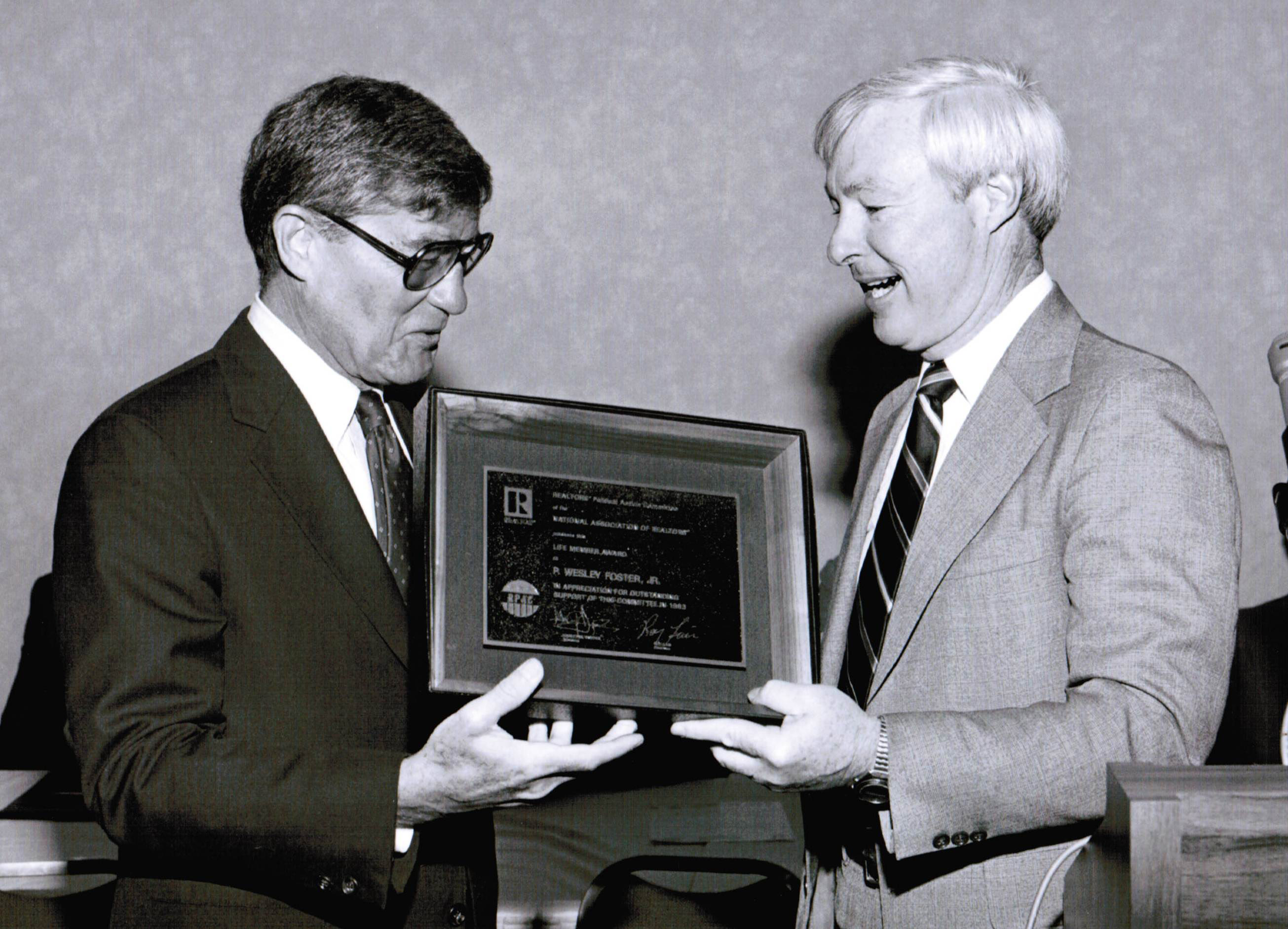Long & Foster was entering its second decade in 1978, when disco hit its zenith with the release of “Saturday Night Fever.” The Reagan era was yet to begin, and the Dow Jones Industrial Average ended the year at 805.
Wes Foster was preparing a move that would rock the real estate world: in 1979, he purchased Hank Long’s half of their powerhouse brokerage. The name remained Long & Foster, but Foster was now head of the company. And Foster’s leadership drew top agents to the firm from the start.
“When I went into real estate in 1979, I picked Long & Foster because they had a great reputation for their ethics and their education of agents and clients,” says Marlene Baugh, an associate broker with Long & Foster in Ashburn, Virginia.
One of Baugh’s fondest memories of her early years in the business was the way Wes Foster helped a new widow avoid losing her home.
“The woman was having a terrible time dealing with the loss of her husband,” says Baugh. “When I arrived with the listing agreement she handed me a paper to read from her bank that said the house was being foreclosed on the next day. She had been missing payments, but she had more than $100,000 in equity. I called Wes to see if we could help her and he immediately wired the money needed to stop the foreclosure. He paid the mortgage for a couple of months until we could get the house sold for her.”
Nellie Arrington, an associate broker with Long & Foster in Columbia, Maryland, started her career with Long & Foster in 1986, when she says more women were choosing real estate as their full-time career.
“The flexibility of real estate and yet the ability to earn a good income was a good fit for me and for a lot of other women,” says Arrington. “I could get out and make money, but I also had time to drive my kids to 40,000 music lessons, concerts and soccer games.”
Arrington says the late 1980s were a great time to be in real estate because there was plenty of pent-up demand and houses to sell.
The era of high mortgage interest rates
In today’s age when some real estate market observers fret about the impact of rising mortgage rates – up to perhaps 4.5 percent by the end of 2018 – veterans have to laugh. In 1978, mortgage rates averaged 10.35 percent and then spiked to 18.45 percent in 1981. By 1998, rates had “dipped” again down to 10.61 percent.
“There were 28,000 homes on the market in D.C, Maryland and Virginia, but it was almost impossible to finance them,” says Baugh. “Long & Foster spent a lot of time educating their agents about options like ARMs, buy-downs and rent-to-own contracts that people could use to wait for mortgage rates to drop.”
There were so many houses for sale that it was hard to decide which ones to show, says Baugh.
“Everything in Loudoun County was listed in a big book, so we would see which ones were under contract with a kick-out clause, assuming those were the best ones,” says Baugh. “Since contracts fell through pretty often because of financing issues, it was a smart strategy.”
Embracing new technology
Real estate listings have come a long way since the days of looking at a book of listings, and Arrington says Long & Foster has always been on the cutting edge of embracing new tools and techniques. The first cellular mobile phone system was introduced by Illinois Bell Co., in 1978.
“I had one of the first car phones and an Apple machine at home,” says Arrington. “Long & Foster was one of the first companies to introduce individual phone numbers with voicemail instead of a central call center for messages. We were also among the first to start using email and computers.”
Arrington says she was still driving contracts around for signatures at 10:30 at night when she first got started selling real estate.
“Technology has made it easier now to handle multiple clients and to document everything through email,” says Arrington. “We can also work in a wider geographic scope today because technology makes it easier.”
Yet some things are still just like the old days: Arrington says accessibility to management is a unique feature of Long & Foster, even though the company now has thousands of employees.
“As big as our company has gotten, it still has the same management style as it did when I started in 1979,” says Baugh. “The philosophy of putting our clients first has never changed.”
